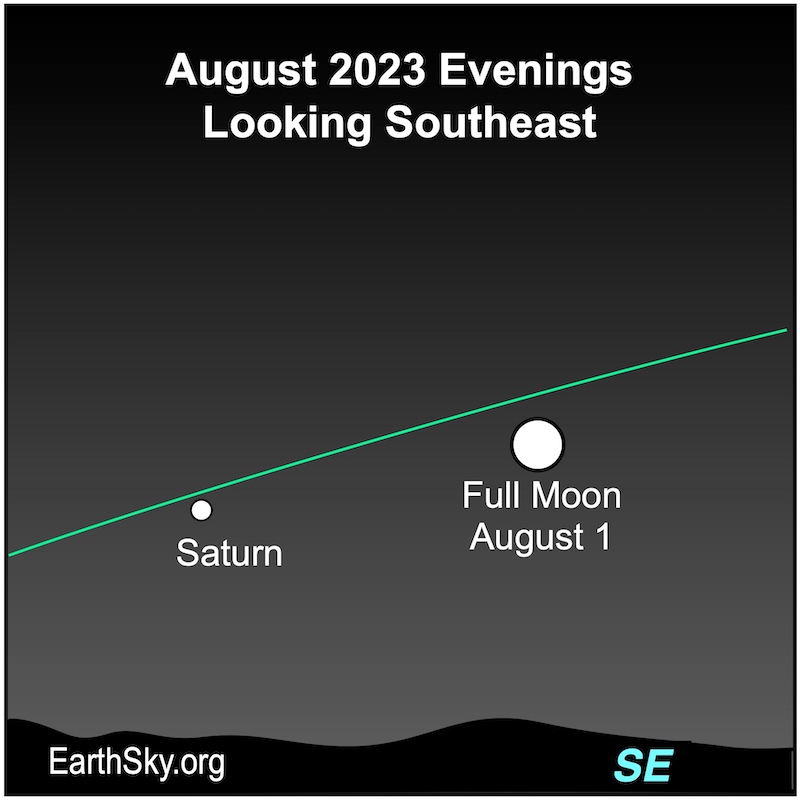
The 1st full supermoon on August 1
What is it? It’s the first of two full moons of August 2023. And it’s the second of four full supermoons in a row this year. It falls on August 1.
Where and when to look: Look for the bright, round moon in the east shortly after sunset on August 1. It’s highest in the sky around midnight. And it’s low in the west before sunrise on August 2.
Crest of the first full moon in August 2023 falls at 18:32 UTC (1:32 p.m. CDT) on August 1. So the fullest moon – for us in the Americas – comes around midday when the moon is below our horizon. No matter. The moon will still be plenty round and full-looking when it rises around sunset tonight. And it’ll be extra-bright, as all supermoons are (after all, to be a supermoon, the moon has to be extra close).
That’s right. To be a supermoon, the full moon must also be close to perigee, the point in its orbit where it comes nearest to Earth. So in addition to its two full moons, August 2023 also has two lunar perigees.
The first August 2023 lunar perigee happens about 12 hours after the crest of the August 1 full moon. It falls at 6 UTC (1 a.m. CDT) on August 2. Indeed, it comes close enough that Fred Espenak and others list this full moon on their supermoon tables. You might know that a supermoon doesn’t look bigger to the eye alone. But it does look brighter. And sometimes particularly high tides will follow supermoons by a day or so.
The 2nd full supermoon on August 30-31
This will be closest full moon, and, therefore, the largest supermoon of the year. So not only does it appear to be the biggest full moon of the year, but it also appears to be the brightest. However, only truly experienced lunar observers will notice a supermoon appearing slightly bigger. But everyone can notice the supermoon appearing brighter (by 16%) than an average full moon.
Where and when to look: Look for the bright, round moon in the east shortly after sunset on August 30, 2023. It’s highest in the sky around midnight. Conversely, it’s low in the west before sunrise on August 31.
Crest of the second full moon in August 2023 falls at 1:36 UTC on August 31 (8:36 p.m. CDT on August 30). That means that the moment when full moon occurs is near when it rises on August 30.
The second August 2023 lunar perigee happens about 12 hours after the crest of this full moon. It falls at 16 UTC (or 11 a.m. CDT) on August 30.
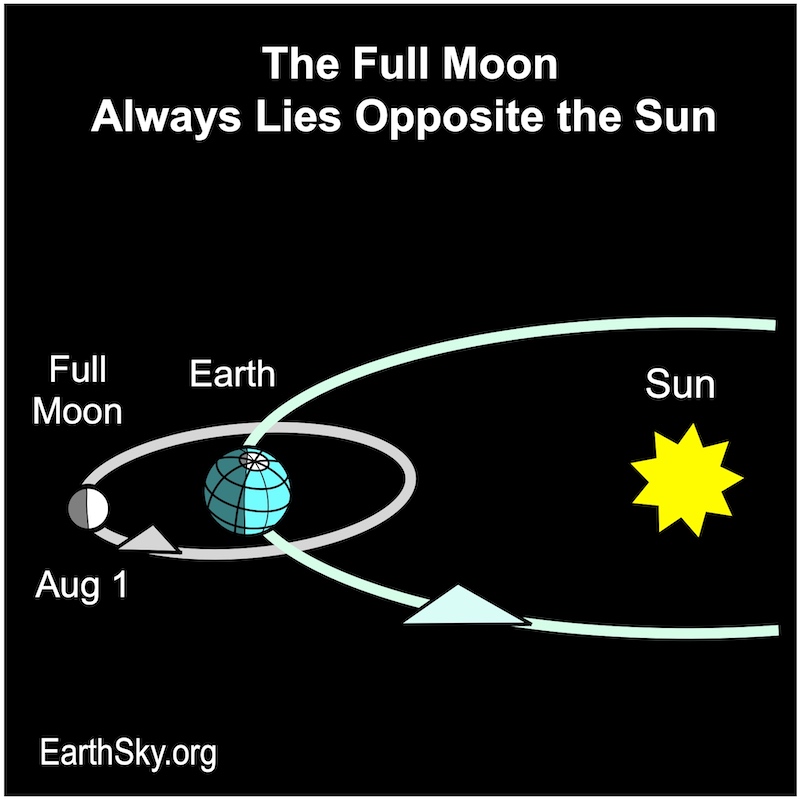
Rise in the east, set in the west
For locations outside of the polar regions, all full moons rise in the east close to the time of sunset. And likewise, all full moons set in the west close to the time of sunrise. At full moon, the sun, Earth, and moon are aligned in space, with Earth in the middle. Therefore, the moon is opposite the sun, visible all night. And, the moon’s day side – its fully lighted hemisphere – directly faces us. That is, therefore, why the moon appears full.
August’s first full moon is the Corn Moon, or Sturgeon Moon
All the full moons have names. Popular ones for this August’s first full moon include Corn Moon and Sturgeon Moon. The name Sturgeon Moon recognizes the August peak of the sturgeon fish catch in the waters of North America’s Great Lakes. In addition, we’ve also heard the name Flying Up Moon for the August full moon.
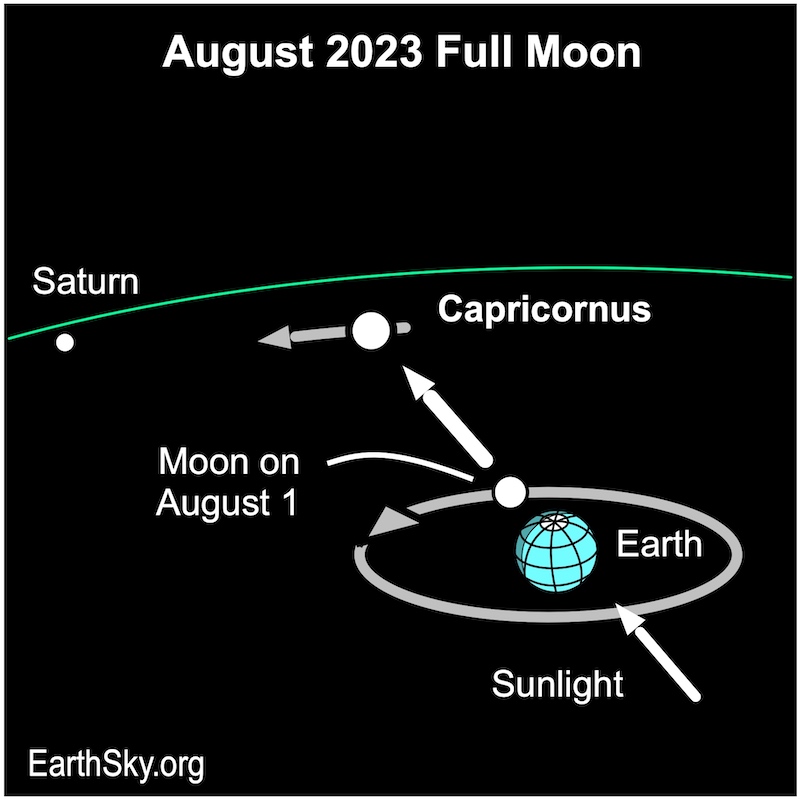
Corn Moon in Capricornus
This August’s first full moon can lie in front of one of two constellations of the zodiac. Most often it’s in front of Capricornus the Sea-goat, and sometimes it’s in front of Aquarius the Water Bearer. As seen from the Americas, the full moon on the overnight of August 1 will be located in the direction of Capricornus.
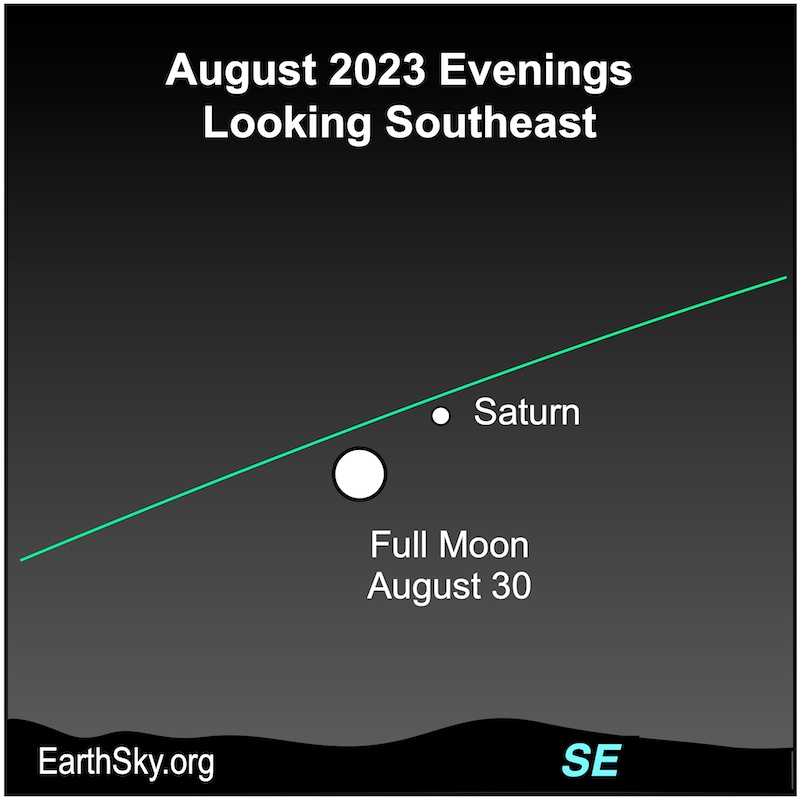
August’s second full moon is the Blue Moon
If a month has two full moons, as this August does, the second one is called – by some people – a Blue Moon. So, this August has two supermoons with one of them being the Blue Moon.
Blue Moon meets Saturn
The August 30 Blue Moon will light the sky around it, blotting out all but the brightest stars. This month, however, a point of light shines nearby. Look carefully in the bright moonlight, and you’ll see not a star, but Saturn, the 6th planet from the sun. Also, Saturn lies opposite the sun, as seen from Earth, three days earlier on August 27. In other words, Earth passes between Saturn and the sun. For this reason, astronomers call it an opposition to Saturn.
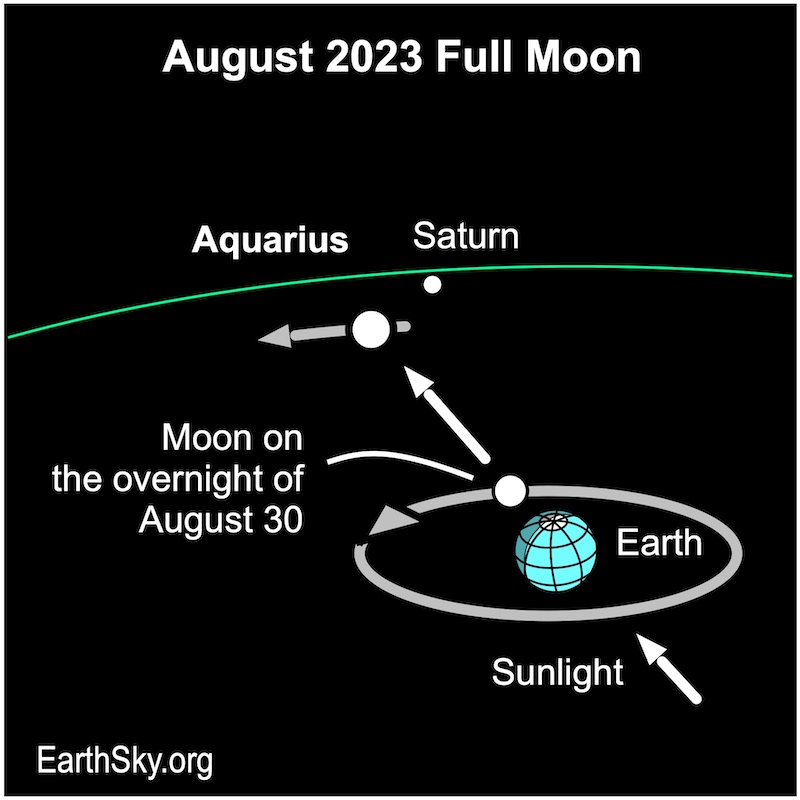
August’s second full moon, the Blue Moon falling on August 30, lies in the direction of Aquarius. It appears near Saturn. You should be able to pick Saturn out in the moon’s bright glare.
Bottom line: This August sees two full moons, both of them supermoons. The full Corn Moon or Sturgeon Moon happens on August 1, 2023. The second full moon, a Blue Moon, occurs overnight on August 30-31, 2023.


